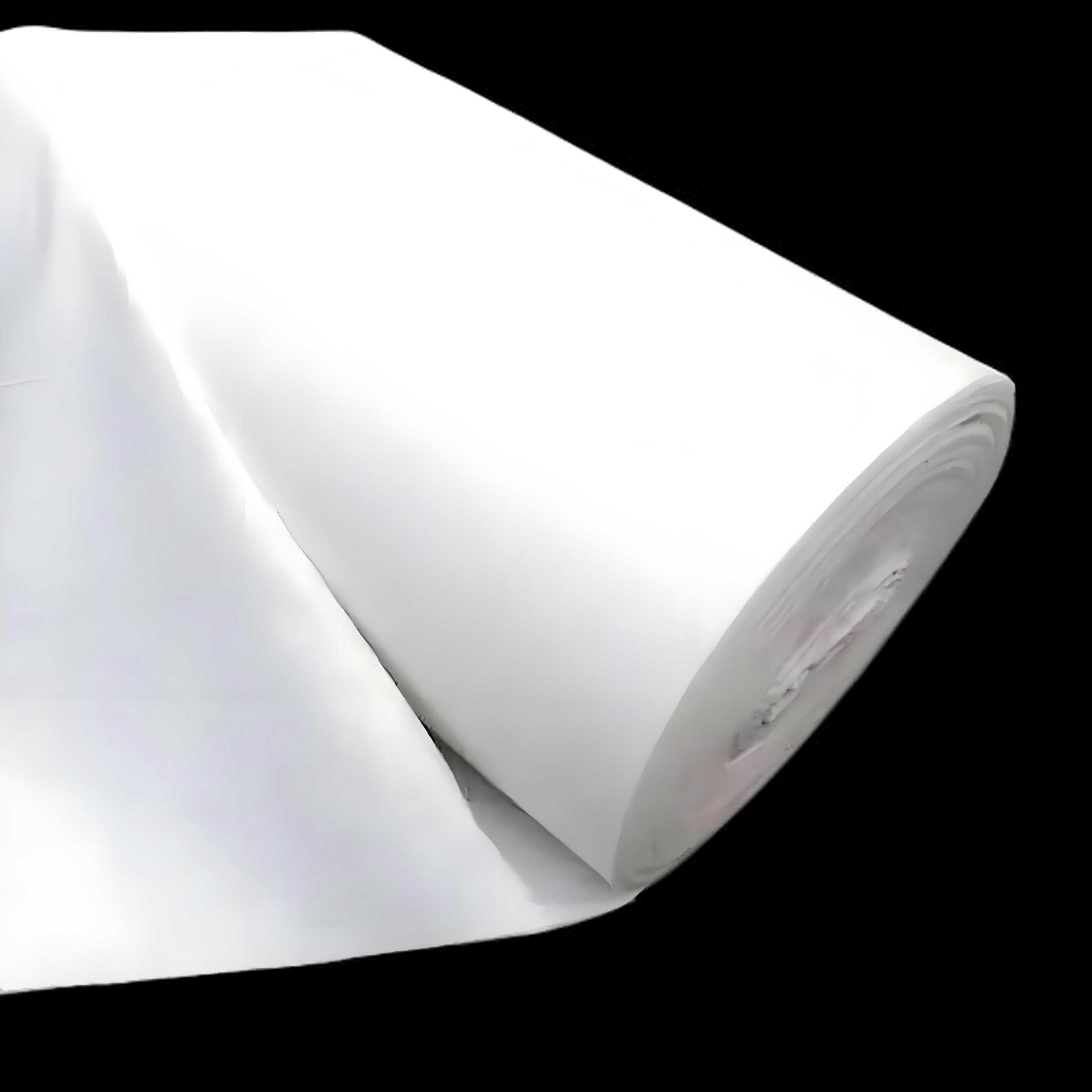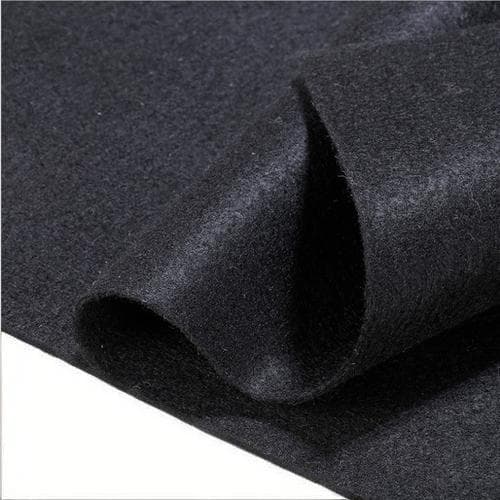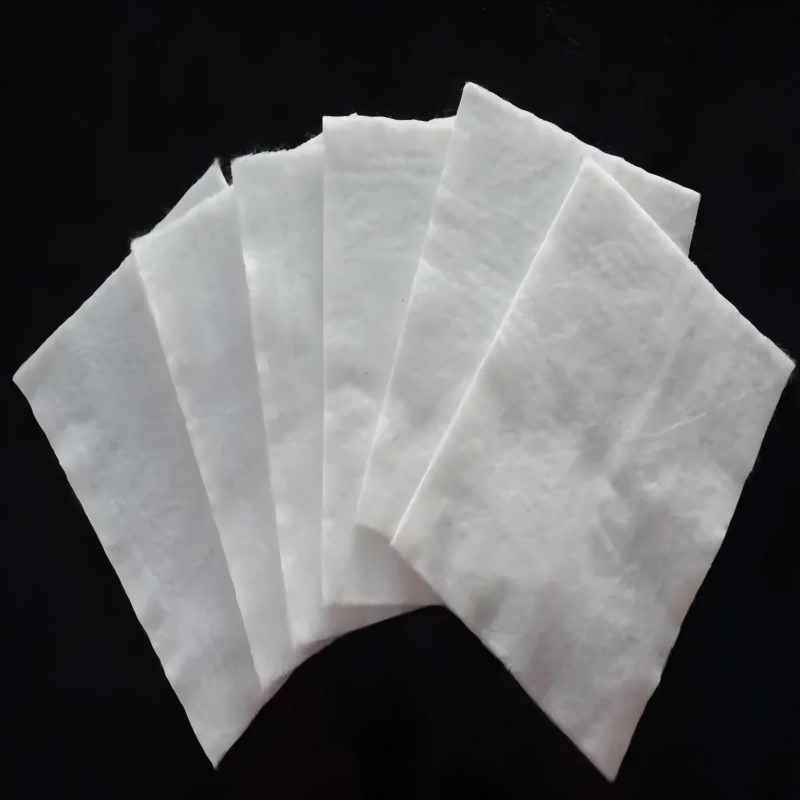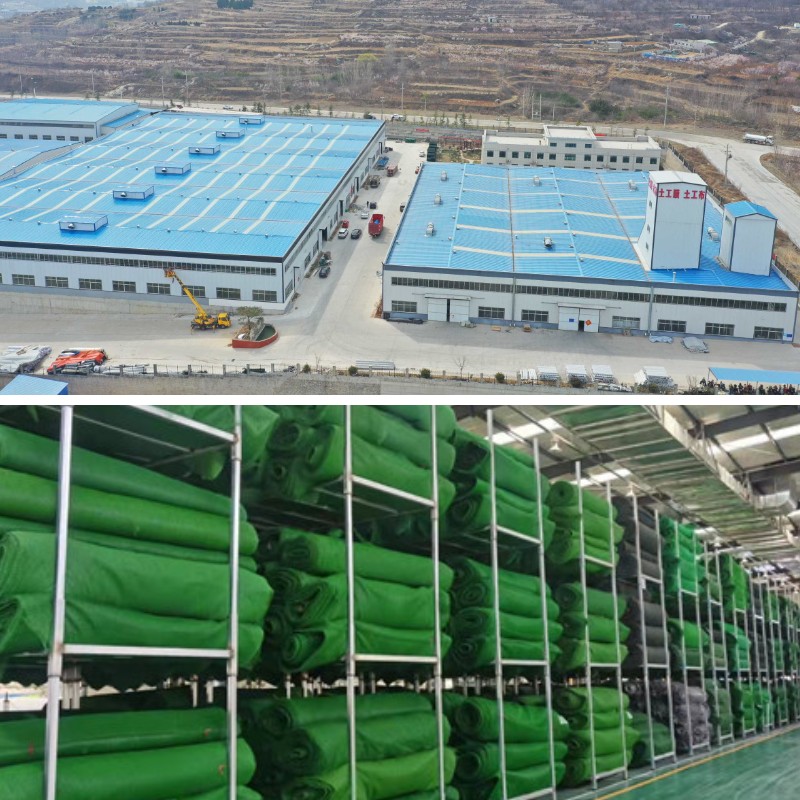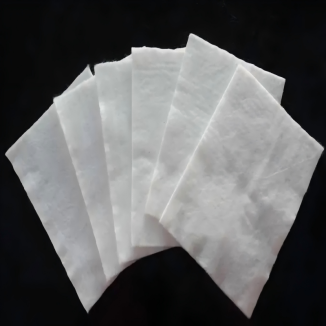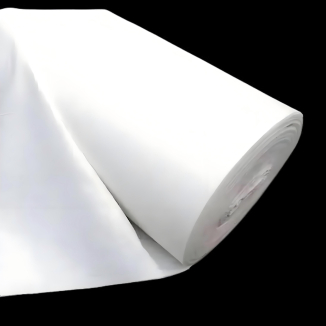Geo Non Woven Fabric
1. Strong filtering ability and stable protective structure:Block soil erosion, allow water infiltration, and prevent engineering siltation and failure.
2. Good protection and long lifespan:Disperse external impact, resist water flow erosion, root system damage, and reduce structural damage.
3. Permeable drainage to reduce risks:Quickly remove excess water and reduce hidden dangers such as foundation settlement and landslides.
4. Convenient construction and wide applicability:Lightweight, easy to cut, suitable for complex terrain, acid and alkali resistant, and versatile for various engineering applications.
Product Introduction
1、 Basic attributes
Geo Non Woven Fabric is a permeable nonwoven geosynthetic material made from polymer materials such as polypropylene and polyester through spinning, needle punching, or thermal bonding processes. The texture is lightweight and soft, with certain tensile strength and flexibility, acid and alkali resistance, corrosion resistance, and can adapt to the engineering needs of different environments.
2、 Core functions
Filtering and blocking: By using fiber pore structure to block soil particle loss, while allowing water to penetrate normally, it prevents structural failure caused by soil siltation in engineering;
Protective buffering: disperses external impact forces, resists water flow erosion, vegetation root damage, and other effects, protects main structures such as roadbeds and dams, and reduces damage;
Drainage and water diversion: Quickly discharge excess water from the soil, reduce pore water pressure, and minimize engineering risks such as foundation settlement and slope landslides.
3、 Main features
Convenient construction: light texture, easy to cut, can be directly laid or stacked for use, suitable for complex terrains such as steep slopes and wetlands, saving construction time;
Strong durability: It has good aging resistance and corrosion resistance, can maintain stable performance in long-term outdoor environment, and extend the service life of the project;
Widely applicable: covering multiple fields such as water conservancy, transportation, municipal engineering, environmental protection, etc., it can be used for various scenarios such as roadbed reinforcement, dam protection, drainage engineering, etc.
Product Parameters
project | metric | ||||||||||
Nominal strength/(kN/m) | |||||||||||
6 | 9 | 12 | 18 | 24 | 30 | 36 | 48 | 54 | |||
1 | Longitudinal and transverse tensile strength / (kN/m) ≥ | 6 | 9 | 12 | 18 | 24 | 30 | 36 | 48 | 54 | |
2 | Maximum elongation at maximum load in longitudinal and transverse directions/% | 30~80 | |||||||||
3 | CBR top penetration strength /kN ≥ | 0.9 | 1.6 | 1.9 | 2.9 | 3.9 | 5.3 | 6.4 | 7.9 | 8.5 | |
4 | Longitudinal and transverse tearing strength /kN | 0.15 | 0.22 | 0.29 | 0.43 | 0.57 | 0.71 | 0.83 | 1.1 | 1.25 | |
5 | Equivalent aperture O.90(O95)/mm | 0.05~0.30 | |||||||||
6 | Vertical permeability coefficient/(cm/s) | K× (10-¹~10-), where K=1.0~9.9 | |||||||||
7 | Width deviation rate /% ≥ | -0.5 | |||||||||
8 | Unit area mass deviation rate /% ≥ | -5 | |||||||||
9 | Thickness deviation rate /% ≥ | -10 | |||||||||
10 | Thickness coefficient of variation (CV)/% ≤ | 10 | |||||||||
11 | Dynamic perforation | Puncture hole diameter/mm ≤ | 37 | 33 | 27 | 20 | 17 | 14 | 11 | 9 | 7 |
12 | Longitudinal and transverse fracture strength (grab method)/kN ≥ | 0.3 | 0.5 | 0.7 | 1.1 | 1.4 | 1.9 | 2.4 | 3 | 3.5 | |
13 | Ultraviolet resistance (Xenon arc lamp method) | Longitudinal and transverse strength retention rate% ≥ | 70 | ||||||||
14 | Ultraviolet resistance (fluorescence UV lamp method) | Longitudinal and transverse strength retention rate% ≥ | 80 | ||||||||
Product Application
1、 Water conservancy engineering field
Dam protection: laid on the upstream face of the dam or inside the dam body, using filtering and blocking functions to prevent soil loss caused by water flow erosion, while using drainage and water diversion to discharge seepage from the dam body, enhancing the stability of the dam;
River management: Laying geotextile non-woven fabric on the river slope to reduce the erosion of river water on the riverbank, protect the slope structure, and serve as a base material for vegetation restoration, while also considering ecological protection.
2、 Transportation engineering field
Roadbed reinforcement: placed between the roadbed and the base layer, it plays a filtering role to prevent roadbed soil from entering the base layer, avoid clogging of the base structure, and enhance the load-bearing capacity of the roadbed by dispersing loads, reducing road surface settlement;
Road surface drainage: It is laid on the structural layer or shoulder of the road surface to quickly discharge rainwater or groundwater, reduce the risk of water damage to the road surface, and extend the service life of the road.
3、 Municipal engineering field
Underground pipeline protection: wrapped around the outside of underground pipelines (such as sewage pipes and oil pipelines), buffering external soil pressure and mechanical impact, preventing the pipeline from being pierced by sharp objects, and blocking soil particles from entering the pipeline interface;
Landfill anti-seepage: As an auxiliary material of the anti-seepage system, it is laid on the upper and lower layers of the anti-seepage membrane to protect it from sharp stones, while also playing a role in filtration and drainage, collecting leachate.
4、 Environmental Protection and Ecological Engineering Field
Soil and water conservation: laying in exposed slopes, mine greening and other scenes, fixing the surface soil, preventing soil erosion, providing a stable environment for vegetation growth, and assisting ecological restoration;
Artificial wetland construction: As an isolation layer for wetland substrate, it separates different media layers to prevent substrate mixing and blockage, while ensuring normal water infiltration and circulation, and improving wetland purification efficiency.
Geotextile nonwoven fabric plays a crucial role in various fields such as water conservancy, transportation, municipal engineering, and environmental protection, thanks to its core functions of filtration, protection, and drainage. Whether it is enhancing the stability of engineering structures, extending the service life of facilities, or assisting in ecological restoration and environmental protection, its lightweight, easy to construct, and strong adaptability make it an indispensable practical material in various engineering projects, effectively solving various practical problems such as soil erosion, structural damage, and poor drainage.


